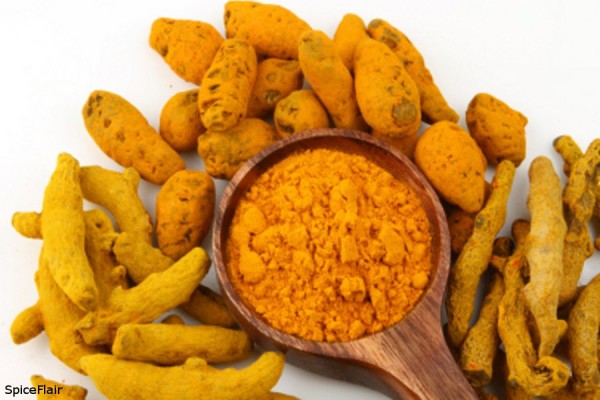
Advertisement
Turmeric (Curcuma longa) is a relative of the ginger family known for its bright yellow color. Its bright color is caused by chemicals called curcuminoids. Among these curcuminoids is a substance called curcumin, which is known as a very potent antioxidant. This active substance found in turmeric has also exhibited anti-inflammatory properties.
But a new study has shown that curcumin in turmeric can stop viruses from latching onto healthy cells inside the body. It particularly pointed out that curcumin effectively stopped the Rift Valley Fever (RVF) virus from replicating inside infected cells.
RVF is transmitted through bites from virus-infected mosquitos and contact with infected animals and their body fluids. RVF affects both livestock and humans, with the latter experiencing little to no symptoms. But around eight to 10 percent of RVF-infected individuals experience much more serious symptoms such as eye disease and brain swelling.
As such, turmeric and its curcumin content have exhibited antiviral potential against the RVF pathogen. The study’s lead author Aarthi Narayanan explained that curcumin is a “broad-spectrum inhibitor” that inhibits viral activity. Curcumin’s antiviral effects also worked on a wide array of disease-causing viruses. Narayanan added: “In the published article, we provide evidence that curcumin may interfere with how the virus manipulates the human cell to stop the cell from responding to the infection.”
Study co-author Kylene Kehn-Hall remarked: “We are very excited about this work, as curcumin … dramatically inhibits [RVF virus] replication in cell culture … [and] demonstrates efficacy against [the RVF virus] in a mouse model.”
Narayanan, Kehn-Hall and the rest of the researchers ultimately noted curcumin’s antiviral potential. They mentioned that this active compound in turmeric could be part of drug therapies against certain viruses in the future.
Turmeric and its curcumin content can be taken in a myriad of ways
Narayanan said she believes in the power of turmeric against viruses because she witnessed its wonders every day. “Growing up in India, I was given turmeric all the time. Every time my son has a throat infection, I give [turmeric] to him,” the researcher explained. Narayanan added that she always “[makes] it a point” to add turmeric to the vegetables she cooks every day.”
Just like Narayanan, you can definitely add turmeric to your daily diet! Indian cuisine frequently makes use of turmeric as a spice powder. It gives curries their distinctive bright yellow-orange color. Turmeric powder is made by boiling turmeric roots and then drying them under the sun or in large ovens. They are then ground into powder, which you can add to your dishes to given them that curcumin boost. Add a dash of turmeric powder to give it an appetizing and bright glow!
Another way to include turmeric in your diet is through golden milk. The beverage takes its name from turmeric, which imparts a golden yellow color. It is made using milk, turmeric and other spices such as cinnamon and ginger mixed in. You can use dairy or vegan-friendly milk and honey or agave syrup to sweeten it. Regardless of how you prepare it, you’ll be sure to benefit from this golden beverage when you have a sore throat or a cold.
But as with other spices, you should take care not to add too much turmeric to your food. Excessive turmeric in your dishes can give them a slightly bitter and chalky aftertaste. The bright yellow color of turmeric may stain your teeth and clothes – and turmeric stains take some time and effort to clean!
Turmeric tea recipe
Turmeric tea is easy to prepare and is very versatile. You can put your own twist on it by adding different ingredients. Regardless of what you put in, drinking turmeric in tea form is a good way to consume its beneficial curcumin content.
Ingredients for 4 cups:
- 4 cups of water
- 1 to 2 teaspoons turmeric (ground, grated or powdered)
- Honey to taste (optional)
- Black pepper (optional)
- Lemon, lime or ginger (optional)
- Dairy or non-dairy milk (optional)
- 1 tablespoon of coconut oil or ghee/clarified butter (optional, if milk is unavailable)
Procedure:
- Boil 4 cups of water.
- Add the turmeric and any of the optional ingredients depending on your preference.
- Let the mixture simmer for approximately 10 minutes.
- Strain the turmeric tea into a container and allow it to cool for 5 minutes.
Including turmeric in your daily diet every day will definitely brighten up your body and help your immune system fight off deadly viruses!
Visit Turmeric.news to learn more about the benefits of turmeric.
Sources:
Advertisements







